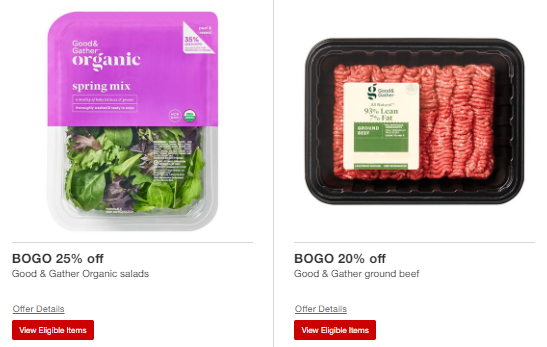Grocery shopping sometimes feels like it falls under the category of necessary evils. We need to eat, and we need to feed our families, too. However, buying groceries can be frustrating, overwhelming and, these days, often increasingly expensive.
But while we can’t get out of grocery shopping – living off takeout, eating out regularly or ordering food delivery would be far more prohibitively expensive and unhealthy of a choice – we can learn to grocery shop smarter. By changing how we shop, when we shop and where we shop, we may discover we’re spending a lot less and getting a lot more for our money.
When it comes to grocery shopping, being prepared is the way to go. We will be less likely to make impulse buys or overspend if we research sales, make a shopping list and buy only what we need. And, by staying on top of what is in season and what we actually use, we may just have the fodder for delicious dishes to enjoy at home for days to come!
These are the grocery-shopping tips to follow that actually work.
Browse the Clearance Aisle
There are seriously great deals to be found in the clearance aisle of any grocery store. This may be a dedicated aisle, a section at the front or back, or even a section of various separate aisles. But it’s a great way of getting the best deals on your grocery staples, usually on items that are overstocked. The best time to visit these clearance sections is early in the day, as they will probably get cleaned out by excited bargain shoppers as the day goes on.
Buying items that are on sale, or even better yet – clearance – will help you save overall, and that includes the staples you always need to keep on hand. It may be a good idea to pick those staples up when they are on a great sale to keep in reserve, rather than waiting until you need it again and maybe ending up paying full price.
Join a Bulk Purchase/Wholesale Club
It may seem that these spots are a good idea only if you are feeding a really large family, but sometimes buying larger amounts really helps to drive down the unit price a great deal. A membership to warehouse club such as Costco starts at around $60 annually, and this can be well worth it if you use it to stock up on your needed paper goods and canned products – and have room to store it all.
Try Meal-Planning
Becoming a smarter grocery shopper starts before you even venture out to the grocery store.
“Before you head to your local grocery store be sure to organize your fridge, freezer and pantry so that you can take a real-time inventory of what foods you already have on hand,” says Fresh Thyme Market’s RD, LDN, Meghan Sedivy.
This helps you take a look at your week and plan meals and snacks around your schedule. That menu will become your shopping list, which you can check against the grocery store’s weekly ad and ensure you are picking up items that are on sale to help keep your grocery bill within budget.
Going shopping with a plan, and with a list, is the best way to not ultimately end up buying a whole bunch of other stuff you don’t need and won’t use – and may be overpaying for.
Find Coupons and Watch for Sales
Planning your shopping in advance allows you to identify stores with sales and the best prices.
“It is not about how much you make – it is about how much you can save,” says Warrant Officer Andrea LaSan, who serves in the U.S. Army and is currently stationed in Korea. LaSan is charged with feeding an army, literally, and managing the budget to feed her troops.
You may even need to visit multiple stores to secure the best deals.
“Consider local farms or meat markets, as they often offer better quality and prices,” LaSan says. “When it comes to groceries, do not underestimate the value of store brands versus big box brands. Many store-brand products have the same nutritional value and ingredients but cost less.”
To that end, it’s also a good idea to try using grocery rewards credit cards. Some credit cards offer cash back on grocery purchases, and there are also cards that are specifically grocery rewards cards.
Consider Store Brands Rather Than Brand Names
If you have a favorite store to shop at, start investigating their store brand of items vs. the brand-name options and give them a try when they look appealing. You may find that the store brand mozzarella costs half as much as the brand-name one but tastes just as delicious and is great quality.
For example, if you’re shopping at Target, check out its house brand Good & Gather (in fact, their weekly ad almost always has deals on that brand):
“Any time you find a generic that’s just as good as a name brand, it’s good to swap to it and use it whenever you can,” says Consumer Analyst Julie Ramhold with DealNews.com. “Then, with the savings on generics, you may be able to afford your preferred name-brand products more easily that you feel you can’t compromise on.”
Stay Away From Pre-Chopped/Grated Items
Yes, everyone is super busy, and it can be tempting to buy pre-cut fruit, chopped onions or pre-grated cheese. Resist the urge. You will pay more for the convenience, and buying fresh, whole blocks of cheese or fruits and veggies will ultimately be a better buy – and also better quality.
We’re always going to pay a price for convenience, and that price will come out of our food budget. So if you are buying convenience foods (and having them delivered, versus going to the store yourself), you’re spending more than you need to for the same exact products.
Join Loyalty Programs
Pretty much every store has loyalty programs now, from Target to grocery chains like Publix and Kroger. Even better: “Most of them are free to join, particularly with grocery stores, though some may have paid tiers you can upgrade to if you find the perks to be worth it,” says Ramhold. “But for the most part, the free tiers are just fine and can net you things like coupons on your favorite products or weekly savings on minimum purchases.
Check the Unit Price

It can be easy to assume the lower ticket on something makes it the best deal, but if you want to be sure your dollar is going further, it’s important to evaluate your purchases based on the per-unit cost.
“Sure, you can buy a 12.5-oz or 32-oz bottle of maple syrup at Walmart (generic brand at that) for $7.98 or $15.98, respectively, but if you shop at stores like Costco and check the unit price on items like this, you’ll actually see you’re getting more for less,” says Ramhold. “A 33.8-oz bottle of maple syrup at Costco is $14.20 and it’s organic, if you happen to care about things like that.
Regardless of what you are buying, whether it’s pasta or boxes of cereal, make sure you’re looking for the unit price to ensure you’re getting the best deal overall.
Shop International Sections
Incorporating global products into your recipes will add levels of flavor and make you feel like a true home chef, but it has an added benefit. You may be surprised at how much you can save on certain ingredients by shopping in international stores and aisles. For instance: “A 2.37oz container of McCormick ground cinnamon is roughly $4.09 and found in most baking aisles, but if you pop over to an international aisle in the same store you can pick up a 2-oz. thing of Badia ground cinnamon for $2.65,” says Ramhold. That’s $1.73 per oz. vs $1.32 per ounce.
International stores and aisles are great to shop for reasons beyond saving money on the products we need. They’re also a great spot to get spices and specialty ingredients at better prices, and that spells keeping family dinner night exciting and delicious.
Compare Store Prices
Not everyone has a lot of store options in their immediate area. But if you do happen to have various grocery stores nearby, try to comparison shop. You may want to investigate if you get a better deal on your go-to dairy and produce by shopping at a spot such as Aldi vs. Trader Joe’s or another store. Once you find the best deals, stick with that store – and you may find out that dividing and conquering, and visiting different local spots for different ingredients needs, is the best way to save overall.
Shop on a Full Stomach
I personally always spend a lot more money and buy a lot of things I don’t need if I am at the grocery store when my stomach is growling. Everything just looks extra appealing. Eat a good breakfast or lunch and then go shopping; you’ll be less likely to make those dangerous impulse purchases.
The post How to Save on Groceries: Tips That Actually Work appeared first on The Real Deal by RetailMeNot.


